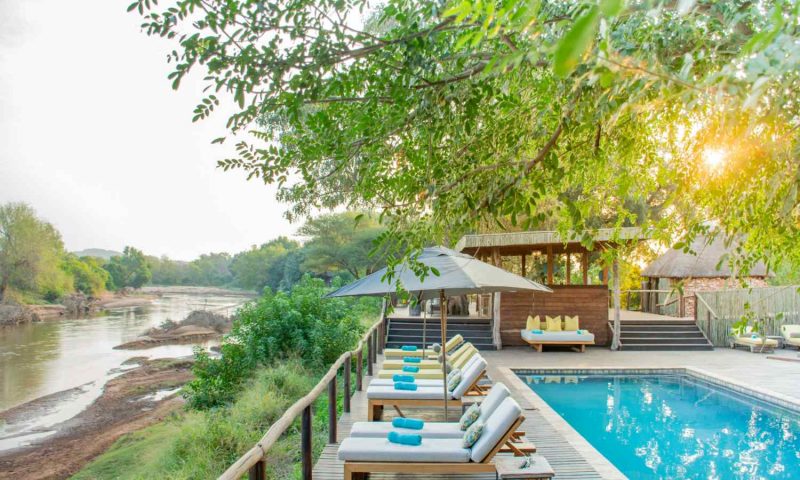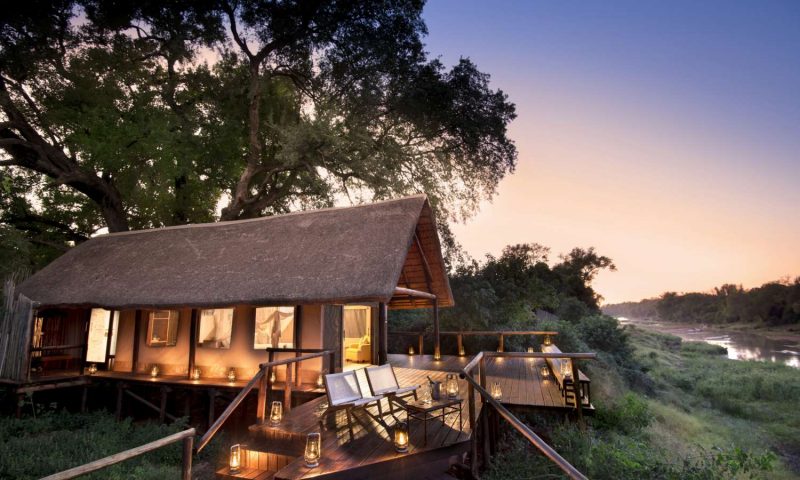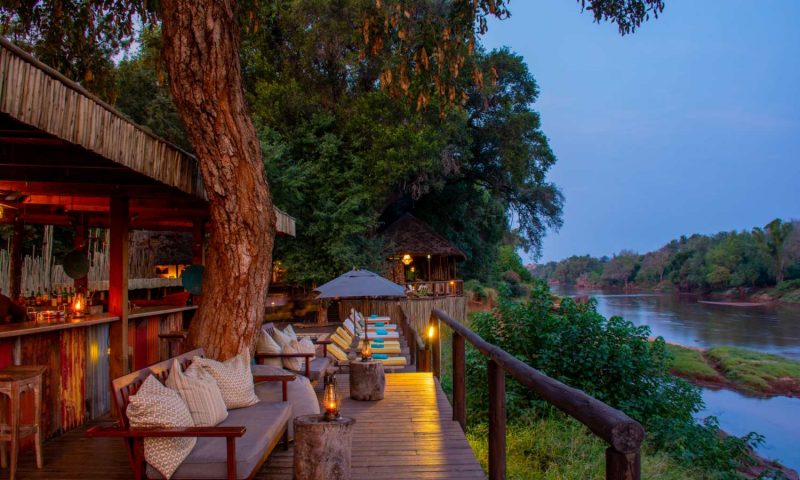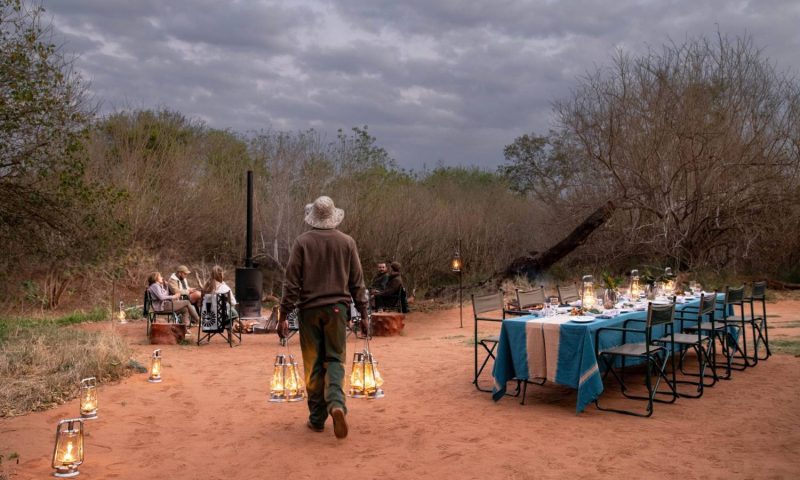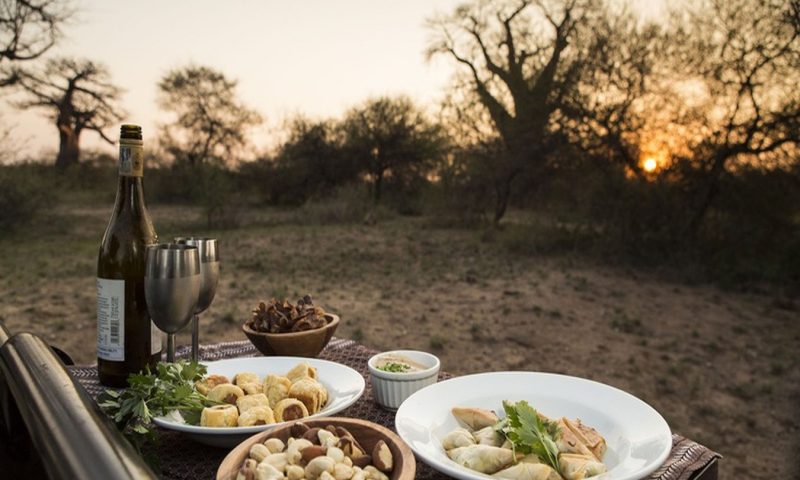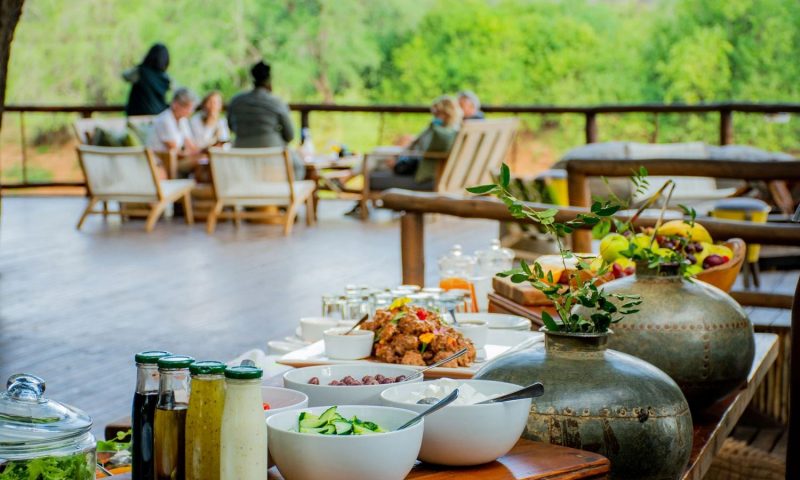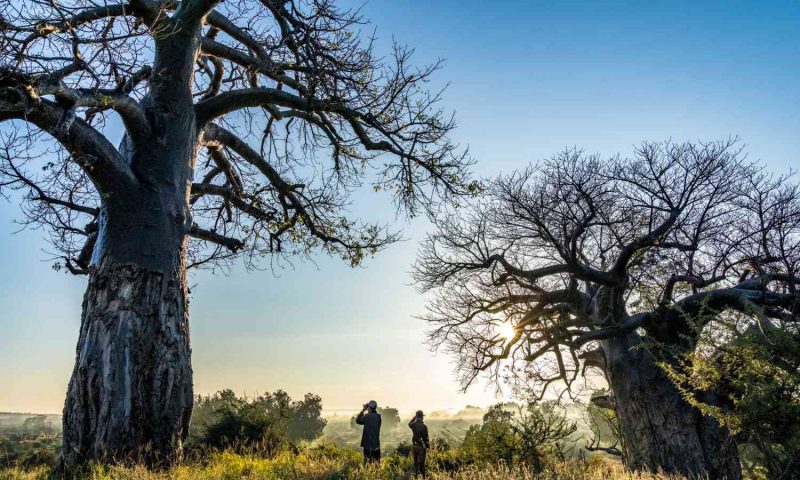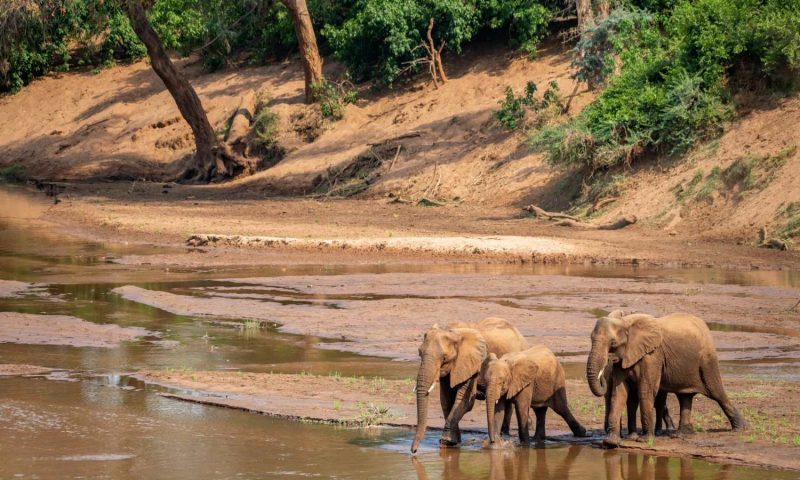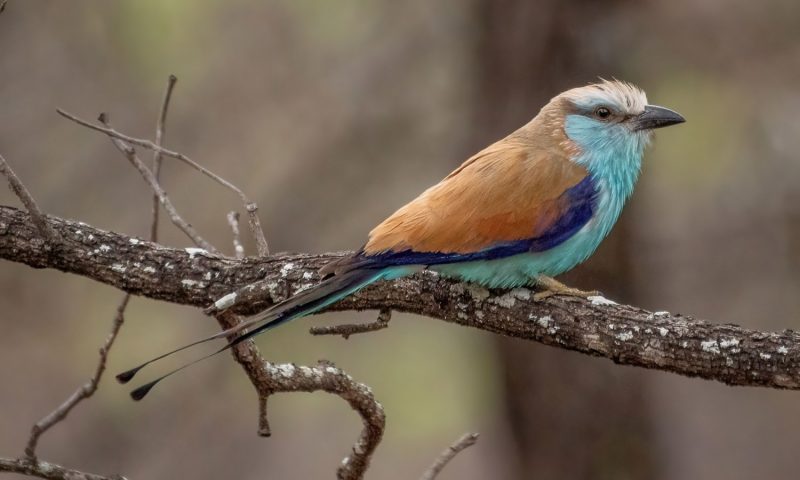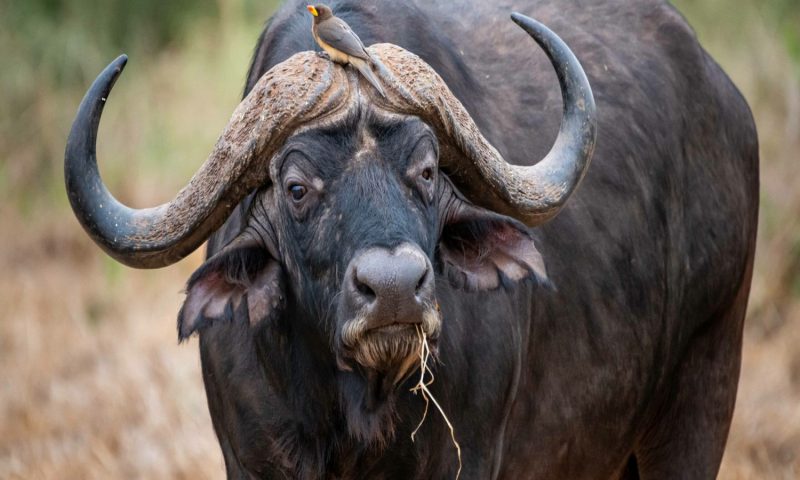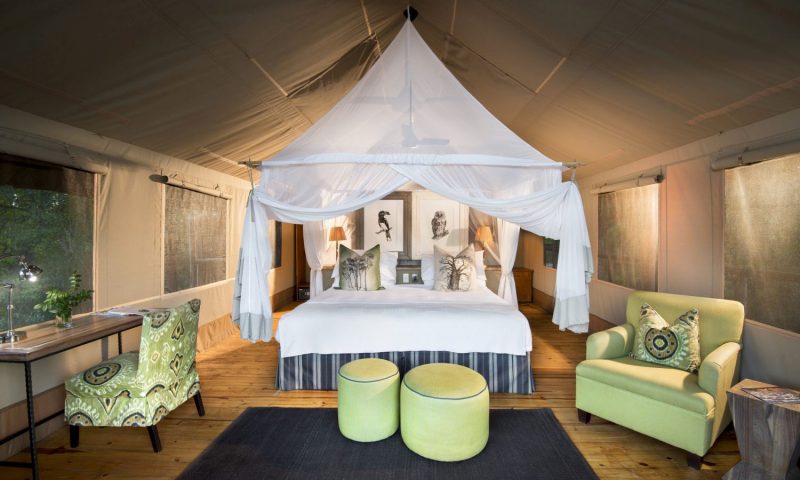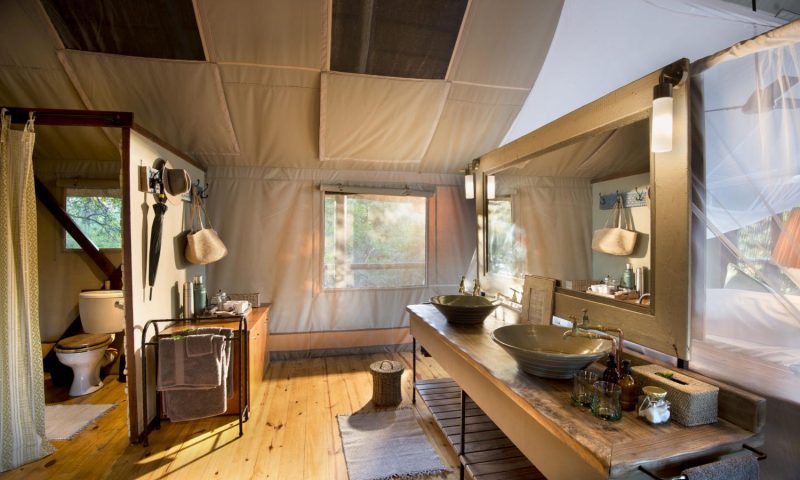Pafuri Tented Camp is situated in the Makuleke Contract Park in the north of the Kruger National Park. This comfortable luxury safari accommodation stretches along the Luvuvhu River on raised wooden walkways. The camp has 19 designer tents with en-suite bathrooms including indoor and outdoor showers.
There are seven ‘family tents’ that sleep families of four. All the tents offer gorgeous views over the Luvuvhu River. A bush bar, swimming pool and al-fresco dining area offer everyday entertainment, and there’s plenty of space to unwind beneath the branches of the giant trees embracing the camp.
Three delicious meals are served each day and guests are invited to take advantage of professionally guided morning and afternoon game drives to experience the extraordinary biodiversity, scenic splendour and history for which the Pafuri region is renowned.
More adventurous guests can opt for guided bush walks where our guides will reveal many of the intimate secrets of the African bush. Close encounters with animals, both large and small are commonplace.
An extraordinary wildlife experience awaits. Large herds of elephant roam the area together with healthy populations of buffalo, antelope, leopard, hyena and more. Due to its fantastic riverside location Pafuri Camp is also the destination of choice for avid birders and guests are regularly treated to sightings of rare species including the elusive Pels Fishing Owl.
AFRICAN SAFARI WEDDINGS
Celebrate your “I do’s” beneath the dappled sunlight of a Fever Tree Forest canopy, and enjoy an extraordinary and unrivalled occasion for you, your partner, and everyone attending.
At Pafuri Tented Camp, we specialise in authentic, warm and intimate weddings. Hosting up to 78 guests at the luxurious eco-friendly camp, the ever-changing scenery and abundance of activities on offer make for an outstanding experience.
The natural surroundings shine through in everything we do, from the ceremony to the wedding photographs, indigenous bouquet, catering (by skilled chefs using the finest local produce), and a heart-warming reception party with those you hold dearest.
Typically, the ceremony takes place nestled under the staggering and tranquil Fever Tree Forest, followed by reception festivities at the camp’s idyllic riverfront deck, surrounded by the calls of Woodland Kingfishers. In harmony with Pafuri’s splendour, the focus is always on stylish simplicity, serenity, and sustainability.
Take advantage of the endless views and the sensational natural sunlight for your wedding photographs which can be taken in various locations around the reserve. As the sun sets, it’s time to dine and dance under the Southern Hemisphere stars, perhaps sneaking away for one last drink by the fire before the wedding winds down.
PAFURI WALKING SAFARIS
See untamed Africa from a new perspective. Our walking safaris explore the remotest part of northern Kruger giving you the chance of close encounters with the big 5 whilst having the opportunity to appreciate the finer details of the African bush. Our professional safari guides will share their intimate knowledge of Pafuri, all of its inhabitants and its history.
Pafuri, in the wild north of the Kruger National Park, is unrivalled walking safari country. You’ll call our seasonal bush camp home, where we serve fuel for the next day’s trek: rich food and drink in hearty portions.
Our experienced field guides open the walking safaris from April to October each year, allowing bush lovers to celebrate a rarely-explored place that is as vast and varied as it is wild. The walking safari offers guests the opportunity to focus on the little things, whilst also experiencing the rush of adrenaline when you happen upon the Big Five.
On our walking safaris you can expect to encounter an array of changing landscapes, from bushveld to riverine forests, mountains to floodplains, and perennial pans which all attract a spectacular variety of animals and birds.
Discover forests of fever trees, groves of baobabs and a diverse collection of wildlife. Highlights of the experience include visits to Crook’s Corner, where the Luvuvhu and Limpopo Rivers meet, Lanner Gorge and the fever tree forest.
HOW ELEPHANTS KEEP COOL IN PAFURI
The swimming pool at Pafuri Camp is a life-saver on a summer day. After a dip, the feeling of a light breeze on wet skin is deliciously cooling. A few metres from the decking, the Luvuvhu river flows strong after seasonal rains, and we never lose appreciation for just how much African wildlife we can see from the poolside recliners.
Recently, a herd of elephant entertained us with watery antics, the young ones dashing about knee-deep, kicking at the flow, sounding their fun. The females and older juveniles inhaled and sprayed torrents of brown water in the air, drenching their backs amidst much flapping of ears and tails. There is no mistaking the pleasure they get in a refreshing bath on these sultry days.
As they moved up-river, they passed immediately below the pool area and I was able to study them close up, seeing every bristle defined, their skin scored like a dry lake-bed. I recalled some interesting pachyderm facts that my guide Ezaya had mentioned on a previous close encounter.
Unlike us, most mammals can’t sweat, but have developed other ingenious cooling mechanisms. For elephants, one way is using those long wiry hairs to conduct heat away from the body. In every other mammal, hair acts to keep the animal warm, so this is a unique adaptation for elephants, and only recently discovered.
The animals were now so close that I could hear the gentle waft of ear movement. While the bristle cooling was news to me, I was more familiar with the reasons for the gigantic ears and how they regulate temperature. As Ezaya told me, the ears basically work like the radiator on a truck.
They account for 20% of an elephant’s surface area and as well as operating as fans, they dissipate heat quickly. The air movement across the veins cools the blood as it circulates, and the animal can fine tune this process by dilating the vessels and pump up to 12 litres of blood through the ears every minute.
The most interesting cooling adaptation is in the elephant’s skin structure, and it is another new scientific discovery. The calves look like they have smooth skin, but in fact the sublayer (the dermis) is rough and has little protrusions called papilla.
Dead skin cells do not shed but instead build up over the dermis in a layer known as the stratum corneum. As the animal ages, that layer gets very thick, and flexing causes cracks to form between the protruding papilla. An adult elephant’s epidermis is about fifty times as thick as ours.
Sporting a couple of ox-pecker birds on her head, one of the older lady elephants paused mid-stream and we made eye contact. She glistened in shades of slate, a muscular mass. I took a hard look at her skin patterns and the creases that are part of her secret cooling mechanism.
Instead of quickly evaporating, the muddy water filters through the cracks in a capillary action and is stored. Scientists estimate that elephant skin retains ten times more moisture than smooth skin, and the outermost layer dries into a mud pack that keeps parasites at bay.
When water is short, a dust bath will do the job of protecting from sunburn and insects. With each trunk-full of river water, the ladies are not just moisturizing, they are teaching their young ones important skills to keep them healthy for a long life.
With the challenges of climate change already evident, it’s nice to believe that elephants will adapt, as they are clearly intelligent. Regardless of good rains this summer, Southern Africa is gripped in a multi-year drought, and elephants are vulnerable.
Some have been seen to rear up on their hind legs to reach tree branches that would usually be reserved for giraffe. Surely the young ones will see that behavior and remember it. As evidenced by the new research discoveries, there is still so much to learn about the natural world and its workings, which is one of the reasons we love being here.
A MAKULEKE MENAGERIE – WILDLIFE AT PAFURI
Nyala, elephant and nightjars are not visitors to Pafuri’s unfenced camps. We are the guests in their domain. I heard two sharp barks from a thicket across the river, the alarm call of a nyala ram. It’s quite different to the throaty two-tone bark of the chacma baboons which echo on the cliffs by night and day.
The nyala sounded again, this time accompanied by a chorus of kek-keks from helmeted guinea fowl. I got up from the table and leaned on the railing of the deck, scanning the river. Just in time – 200m away, I spotted a leopard patrolling the sandy bank, a moment before it ducked back into cover.
The alarm cries followed it downriver. As I finished breakfast, a distant cacophony of vervet monkey chatter announced its progress. It’s not surprising that they mostly hunt at night with so many noisy lookouts by day.
It was not a bad start to the day, a leopard at breakfast. In the mornings their tracks are often seen near the lodge, and even between the tents of the fly camp. Hyena and black-backed jackals are also night visitors, and it’s interesting to start the day by searching for fresh spoor.
Almost all camps in the Kruger National Park have electric fences to keep out big animals like buffalo and elephant, but not here. I was staying at the fly camp when a lone bull elephant came to browse. I’m struggling to think of ever seeing an elephant that was not feeding or drinking.
The low nutrient value of the food they eat, and their large size, means they spend 16-18 hours a day foraging. This one wasn’t going to let the presence of a few humans or tents interrupt business, and he spent the afternoon pruning the ana trees.
The next day, the same elephant was at the main camp, 4km away. He stepped delicately across the boardwalk by reception, reaching for green branches to snap, strip and chomp. The layout of the camp keeps guests and staff safe. A raised walkway connects all the rooms to the central reception, pool and dining areas.
When animals come close, such as that bull elephant or buffalo, staff keep a close eye on both animals and guests. It’s an amazing experience to stand so close and make eye contact with a wild animal, soaking up the sounds and scents.
The calls of the baboons and vervet monkeys add much to the bush ambiance, but they are not welcome in the camps, especially when the buffet meals are spread. They are fearless raiders and while their antics can be amusing, it’s not healthy for them or us to have them habituated to using the camp as a food source.
Other birds and beasts are appreciated, a menagerie to be enjoyed while reclining with a book and cocktail. Nyala and bushbuck are always nearby, foraging in the shade. Kingfishers and flocks of white fronted bee-eaters are vivid against the earth tones of sandstone and bushveld.
The trees that shade us are home to nests and roosts that are most evident from the nocturnal sounds. Bush babies (Southern lesser galago) stir themselves after nightfall, their frequent vocalizations leading us to search by torchlight for their out-size eyes. When scared they make a high-pitched whistle.
Genets are commonly spotted in both camps in the evenings, attracted by the smell of the braai. The riverine habitat and large trees suit them, and the larger civet too. I have written here before about the magical sounds of owls, but they are not the only birds to give us bedtime music.
The nightjars can be hard to tell apart by sight, but at night the different songs tell us that both fiery-necked and square-tailed (Mozambique) varieties are present.
The call of the fiery-necked nightjar is clearly that of a bird, but the Mozambique nightjar makes a long churring sound, and when I first heard it I thought it was a frog or insect. As long as they are not directly over the tent, the soulful sounds of both are soothing. They are telling us that we are the visitors here, not them.
